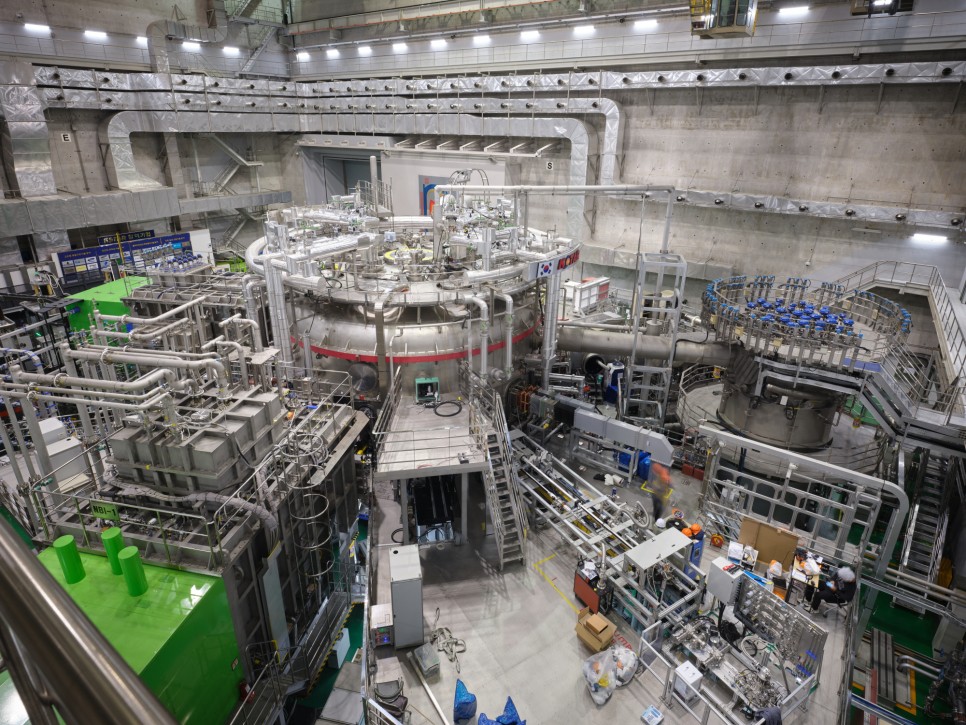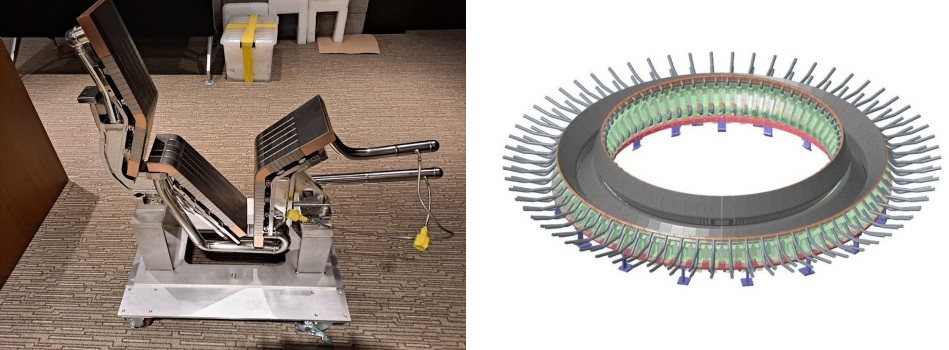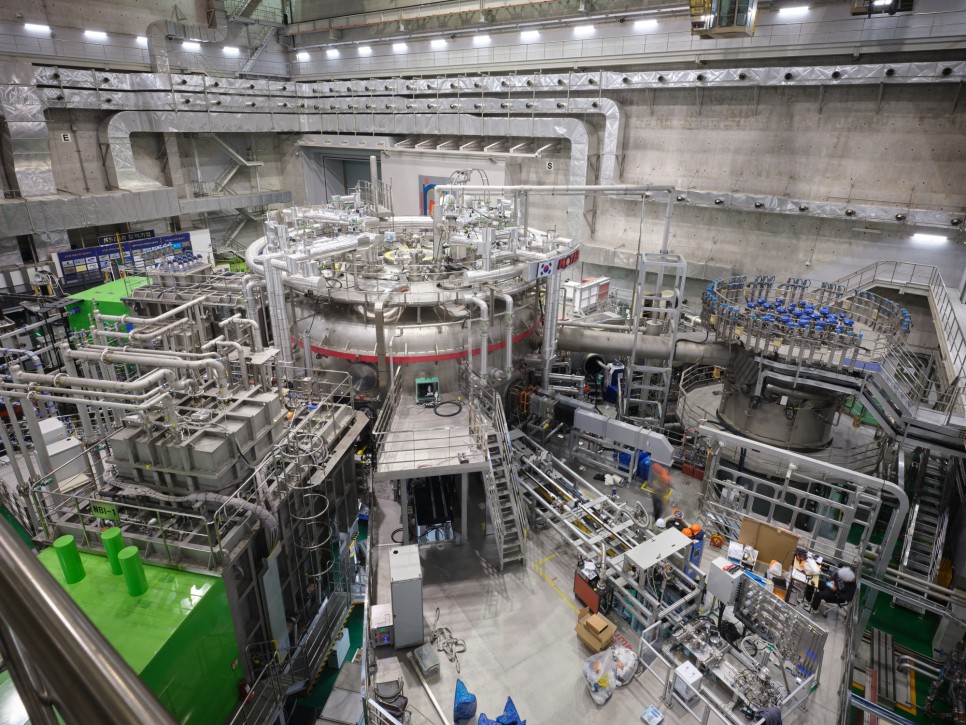KSTAR is Ready to Heat Up for Longer
-Objectives and Challenges to KSTAR’s 2023 Campaign
As winter creeps in ever closer, KSTAR campaigns would have started to wind down most years but not this year. The KSTAR divertor upgrades started this summer are finally finished and operations have resumed on October 24th. Plasma testing is due to begin on December 21st when internal impurities are purged to create a vacuum and superconducting magnets are prepared. With 50 days left before plasma testing resumes, let’s take a look at KSTAR’s 2023 campaign plans.
Forming the basis of ‘300 seconds by 2026’
The main issue of the 2023 KSTAR campaign is the upgrade to tungsten divertors. The original carbon divertors could take a thermal load of 5MW/m2, tungsten divertors can take 10MW/m2. It is more heat resistant and features a better flow of coolant so it can take a greater thermal load for a longer period of time.
Director Woongchae Kim of the Advanced Plasma Research Division said “we upgraded the divertors to maintain 100 million degrees plasma for longer”, and that “the new divertors will lay the foundation for achieving ‘100 million degrees plasma for 300 seconds’by 2026”.
Divertors come into direct contact with plasma and removes impurities that form as the plasma interacts with wall materials. The more heat-resistant the divertors are, the longer one can maintain high-performance plasma so the thermal-resistant properties are very important.
“With KSTAR’s upgrade to tungsten divertors, we expect cooperation with ITER to improve. While there are other fusion research devices that utilize tungsten divertors, only KSTAR utilizes them under conditions(plasma shape, structure) that are similar to ITER”.
KSTAR acquiring the operational techniques to operate high performance plasma for prolonged periods is expected to relieve ITER’s operational uncertainties and provide related first mover advantages.
-(Left)Tungsten Divertor Cassette Assembly / (Right)64 Divertor Cassette Assembly Modules after assembly-
KSTAR’s 2023 campaign will be the first time it operates plasma tests in an environment with tungsten divertors. Therefore, the Plasma Commissioning Working Group is seeking out optimal plasma shaping, temperatures, strength of magnetic fields, and other operational factors.
“The main goal of KSTAR’s 2023 campaign is to recreate last year’s operational records and create plasma just as well as it has in the past. To that end, we need to make sure that the tungsten divertors have been properly accommodated and whether previous operational modes can be used in the new environment”.
Plasma testing will take place from late December 2023 to February 2024. What other issues are there for KSTAR?
Issue One. Taming the tungsten divertors
Tungsten is very much a double-edged sword. It is a high density, high strength material-making it capable of resisting the high temperatures of plasma for longer, but it has a tendency to shatter like ceramic despite being a metal. Also, because its atomic number is high, there is a chance that electrons may lose their energy if they happen to pass by tungsten ions that smeared into the core of the plasma. Those electrons which lost energy make it difficult to sustain the plasma current.
Tungsten has long been mentioned as an important ingredient for tokamak devices but it has not really been fully utilized for these reasons. However, with advances in material sciences and plasma control techniques, tungsten is once again being lauded as the optimal ingrediant for tokamak devices. EU’s JET, Germany’s ASDEX-U, China’s EAST, and ITER also chose tungsten for their divertors. KSTAR has followed suit.
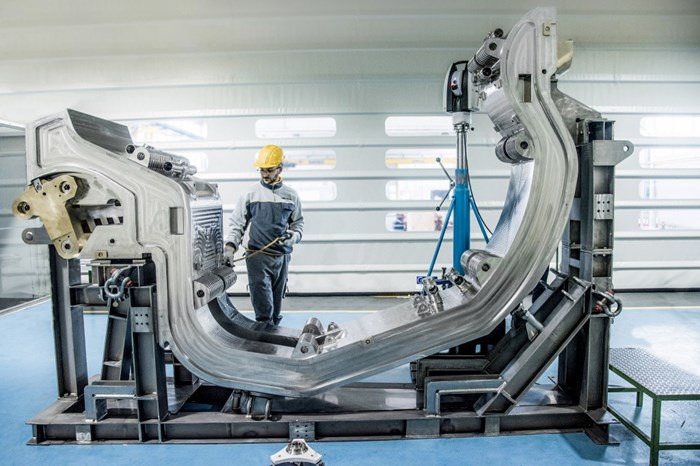
-ITER's Divertor-
It is perhaps natural for even the seasoned researchers and operators of KSTAR to worry a bit about working in a new tungsten environment.
Director Woongchae Kim remarked that “we meticulously studied prior cases and made appropriate preparations so I expect good results from the tungsten divertor environment. And we have prepared plans to deal with any issues that may arise so now all we have to do is act”, while mentioning that he plans to not worry needlessly.
Another point worth mentioning is that KSTAR’s tungsten divertor has a closed geometrical structure. The original carbon divertors had an open structure so it was easier to form plasma in different forms in it but with the new closed structure, certain adjustments must be made.
Therefore, in this year’s experiments, the KSTAR research team plans to undertake various challenges to achieve rapid adaptation to the new divertor environment and fild the optimal plasma shape for optimal performance.
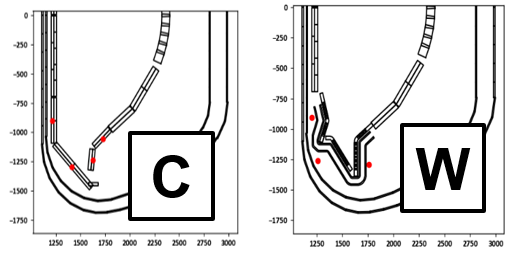
-Divertor Structure Comparison : (Left)Carbon Divertor / (Right) New Tungsten Divertor-
Issue Two. A hotter device
As we prepare for the 2023 campaign, KSTAR has undergone changes beyond just the divertor. Anticipation is gathering for the active roles heating devices such as helicons, NBI(neutral beam injector), and ECH(electron cyclotron heating) in KSTAR.
Just as different heat sources such as gas cookers, microwaves, and ovens are used in the home according to their respective characteristics, the plasma heating systems for KSTAR are also diverse. In the same way that a gas cooker with more power and sufficient fuel can cook faster at higher temperatures or for longer, the KSTAR heating systems can heat the plasma to hotter temperatures and for longer as the power increases.
The primary heating device currently used to heat the plasma and drive the current in KSTAR is NBI (Neutral Beam Injector), which directly injects powerful high-energy neutral particles accelerated externally into the plasma. NBI is also utilized for various diagnostics, including ion temperature measurements, current distribution, and fluctuations in particle behavior. Similar to how a microwave oven delivers energy to food in the form of electromagnetic waves, the ECH (Electron Cyclotron Heating) transfers energy to the plasma in the form of electromagnetic waves, playing a crucial role in electron heating, electron current drive, as well as controlling the temperature and current distribution of the plasma. This year, efforts will be made to strengthen plasma operation through more stable NBI operation, and enhanced performance with the addition of 2MW ECH.
The Helicon heating device is a new addition. It is an essential device for achieving long-pulse operations of 100 seconds or more by making a significant contribution to the plasma current drive. With the Helicon device being actively used in experiments from this year, much attention is being focused on the changes it will bring to plasma operation.
-Various Heating Devices Surround KSTAR-
Issue Three. Plasma commissioning for optimal conditions
As we mentioned before, the 2023 KSTAR campaign has two main goals. The first is to see if the newly installed tungsten divertors create a normal operating environment, and the other crucial goal is implementing the high-performance plasma operation capabilities KSTAR has shown last year. To achieve these goals the plasma commissioning period, which is a sort of trial run to ensure that the plasma can run at levels required during the actual campaign, will run for longer than usual.
Before plasma experiments begin in December, commissioning will take place to test if the vaccuum, fuel injection, PCS, power systems, and superconducting coils work properly.
In particular, various diagnostic devices are necessary to continually monitor the temperature and shape of the plasma in real-time. Due to the replacement of the diverters, the previously installed diagnostic devices were dismantled and reinstalled. Therefore, testing must be conducted to ensure there are no performance issues. Additionally, it is essential to inspect the newly added cooling system, as well as components such as the cryogenic system to lower the temperature of superconducting magnets, the heating system, and the baking system for the vacuum vessel.
"The KSTAR campaign undergoes a thorough preparation process each year, involving the dedicated efforts of many individuals. Therefore, this year, the plasma commissioning period to adapt to the tungsten environment will be longer than usual, but there are no changes in the steps or processes for preparing the experiments. We will continue to do our best as always."
